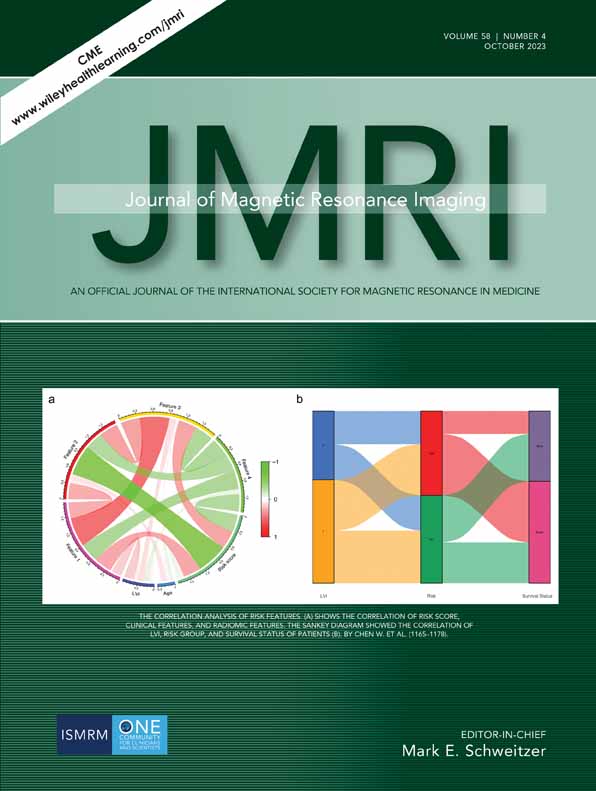Effect of Averaging Measurements From Multiple MRI Pulse Sequences on Kidney Volume Reproducibility in Autosomal Dominant Polycystic Kidney Disease
Abstract
Background
Total kidney volume (TKV) is an important biomarker for assessing kidney function, especially for autosomal dominant polycystic kidney disease (ADPKD). However, TKV measurements from a single MRI pulse sequence have limited reproducibility, ± ~5%, similar to ADPKD annual kidney growth rates.
Purpose
To improve TKV measurement reproducibility on MRI by extending artificial intelligence algorithms to automatically segment kidneys on T1-weighted, T2-weighted, and steady state free precession (SSFP) sequences in axial and coronal planes and averaging measurements.
Study Type
Retrospective training, prospective testing.
Subjects
Three hundred ninety-seven patients (356 with ADPKD, 41 without), 75% for training and 25% for validation, 40 ADPKD patients for testing and 17 ADPKD patients for assessing reproducibility.
Field Strength/Sequence
T2-weighted single-shot fast spin echo (T2), SSFP, and T1-weighted 3D spoiled gradient echo (T1) at 1.5 and 3T.
Assessment
2D U-net segmentation algorithm was trained on images from all sequences. Five observers independently measured each kidney volume manually on axial T2 and using model-assisted segmentations on all sequences and image plane orientations for two MRI exams in two sessions separated by 1–3 weeks to assess reproducibility. Manual and model-assisted segmentation times were recorded.
Statistical Tests
Bland–Altman, Schapiro–Wilk (normality assessment), Pearson's chi-squared (categorical variables); Dice similarity coefficient, interclass correlation coefficient, and concordance correlation coefficient for analyzing TKV reproducibility. P-value < 0.05 was considered statistically significant.
Results
In 17 ADPKD subjects, model-assisted segmentations of axial T2 images were significantly faster than manual segmentations (2:49 minute vs. 11:34 minute), with no significant absolute percent difference in TKV (5.9% vs. 5.3%, P = 0.88) between scans 1 and 2. Absolute percent differences between the two scans for model-assisted segmentations on other sequences were 5.5% (axial T1), 4.5% (axial SSFP), 4.1% (coronal SSFP), and 3.2% (coronal T2). Averaging measurements from all five model-assisted segmentations significantly reduced absolute percent difference to 2.5%, further improving to 2.1% after excluding an outlier.
Data Conclusion
Measuring TKV on multiple MRI pulse sequences in coronal and axial planes is practical with deep learning model-assisted segmentations and can improve TKV measurement reproducibility more than 2-fold in ADPKD.
Evidence Level
2
Technical Efficacy
Stage 1




